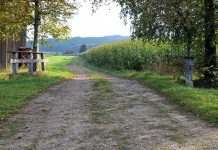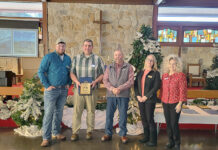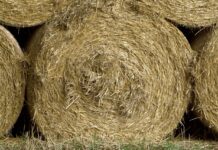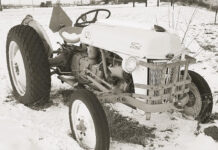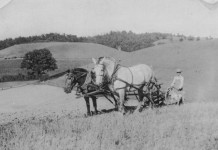I just finished listening online to a sermon my Episcopalian friend Whitney Kimball Coe gave on Sunday. She begins her message by telling the congregation that while her decorations, including ornaments, are all packed up and tucked away for another year, her Christmas tree and Christmas lights are still up. It’s the coziness of that little tree on the still-long evenings that she can’t seem to let go of yet.
Meanwhile, last weekend was Imbolc, an ancient Celtic holiday that celebrates the midpoint of winter. We are now officially on the other side of the darkest part of the year.
The nights are still long, but the days are catching up. In just a little over six weeks, it will be the equinox, and the days will be longer than the nights again. But, honestly, that still sounds like a lot more cold darkness to me.
I’ve written a column about Imbolc almost every year I’ve written a column, which is to say over a decade. Imbolc in Gaelic means “in the belly,” which referred to the fact that livestock was pregnant and often about to give birth. Historically, by this time of the winter, the stores of the harvest had been depleted, so the new, fresh milk that came with the babies was a necessary and anticipated addition to everyone’s diet.
This is also when, by the imperceptible rhythms of the sun’s dance with earth, the seeds deep in the belly of the soil begin to awaken. In much of the northern hemisphere, new life is beginning to slowly welcome itself back into the wheel of seasons, but for us surface dwellers, that isn’t so easy to observe.
I don’t mean to show Whitney up, but we took our Christmas tree down a few weeks ago.
We had a real Christmas tree this year, purchased from the county conservation office, and it was the most beautiful Christmas tree we’ve ever had. It was full and perfectly shaped, and everyone who entered our house marveled at it. But by New Year’s Eve, the needles were beginning to gather in drifts around the tree’s red skirt. All you had to do was accidentally brush past the tree, and another branch reminded you how long it had been since that sweet beauty had known soil.
I’m not sure if our tree would still be up had it not begun its exit via the pine needle diaspora, but most of our other holiday decorations were packed up weeks ago as well.
The one sign of Christmas that remains on display is the Nativity. This isn’t on purpose, or at least wasn’t a conscious decision. Every day as I walk past it multiple times, I think, “I really need to put that away,” but I don’t do it.
The thesis statement of Whitney’s sermon is that she needs to stop controlling the narrative; she needs to put away the artificial lights and let the true light of the world, Jesus Christ, take over at the wheel. She acknowledges that this is always hard, but is maybe especially hard right now.
She goes on to say, “Divine love confronts our human certitude and our plans … each time we are pushed to radical love.” Then she delivers this line: “Are we merely inspired by Christ’s ministry, or will we allow ourselves to be transformed by it?”
Sitting at my desk right now, picturing the figurine of baby Jesus that I can’t seem to pack away — a tiny plastic toy in a tiny plastic manger that somehow symbolizes huge swathes of Western thought and historical movements — I’m thinking about what transformation and radical love require of me.
In my faith tradition, radical love means welcoming the stranger. It means questioning my very natural human instinct to see someone who is different or unfamiliar as potentially dangerous. It means praying for guidance when I walk through the dark, cold winter prairie of my fears and griefs.
And I wonder, as Whitney asks in her sermon, if I will allow myself to be transformed and undone by this idea of radical love, which is perhaps the scariest task of all.



